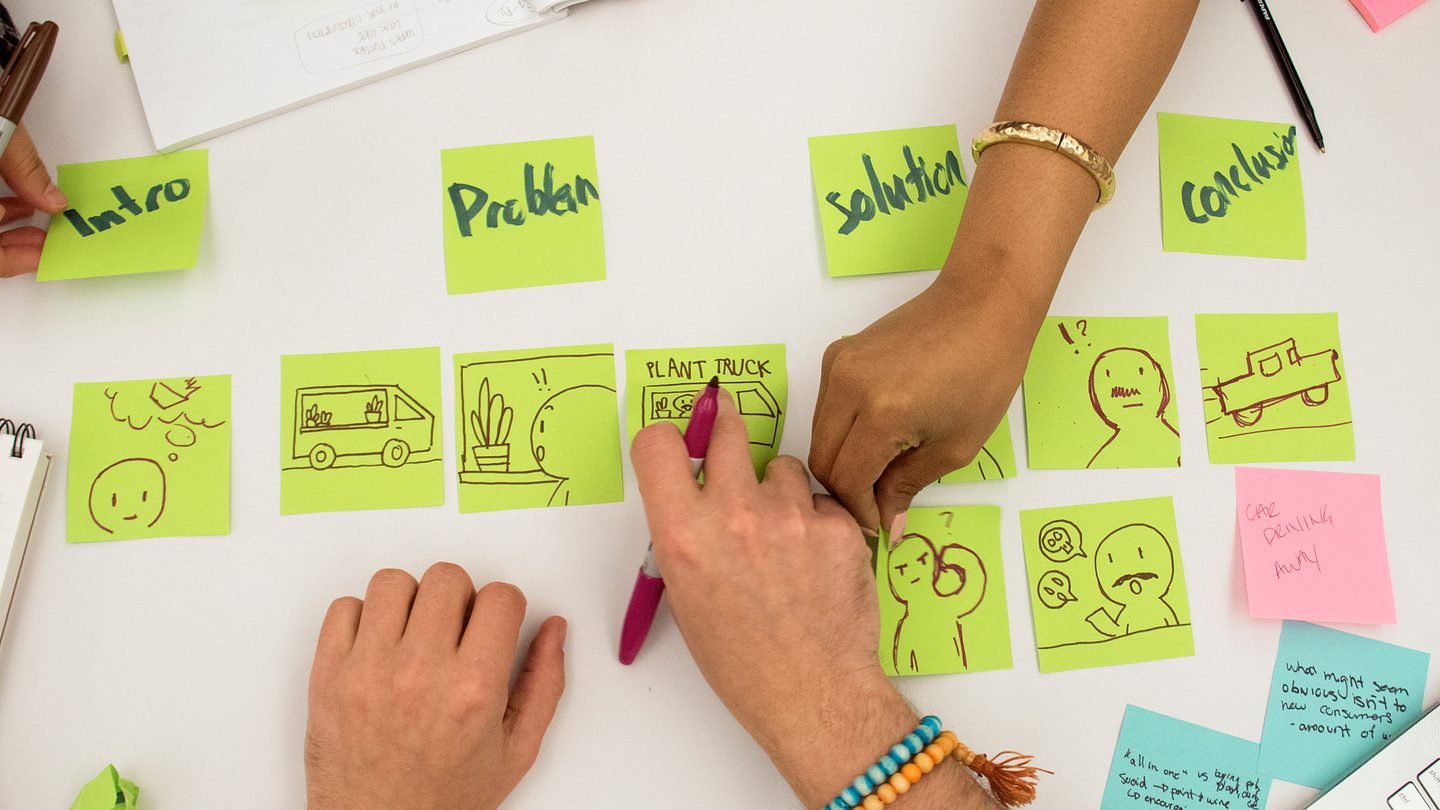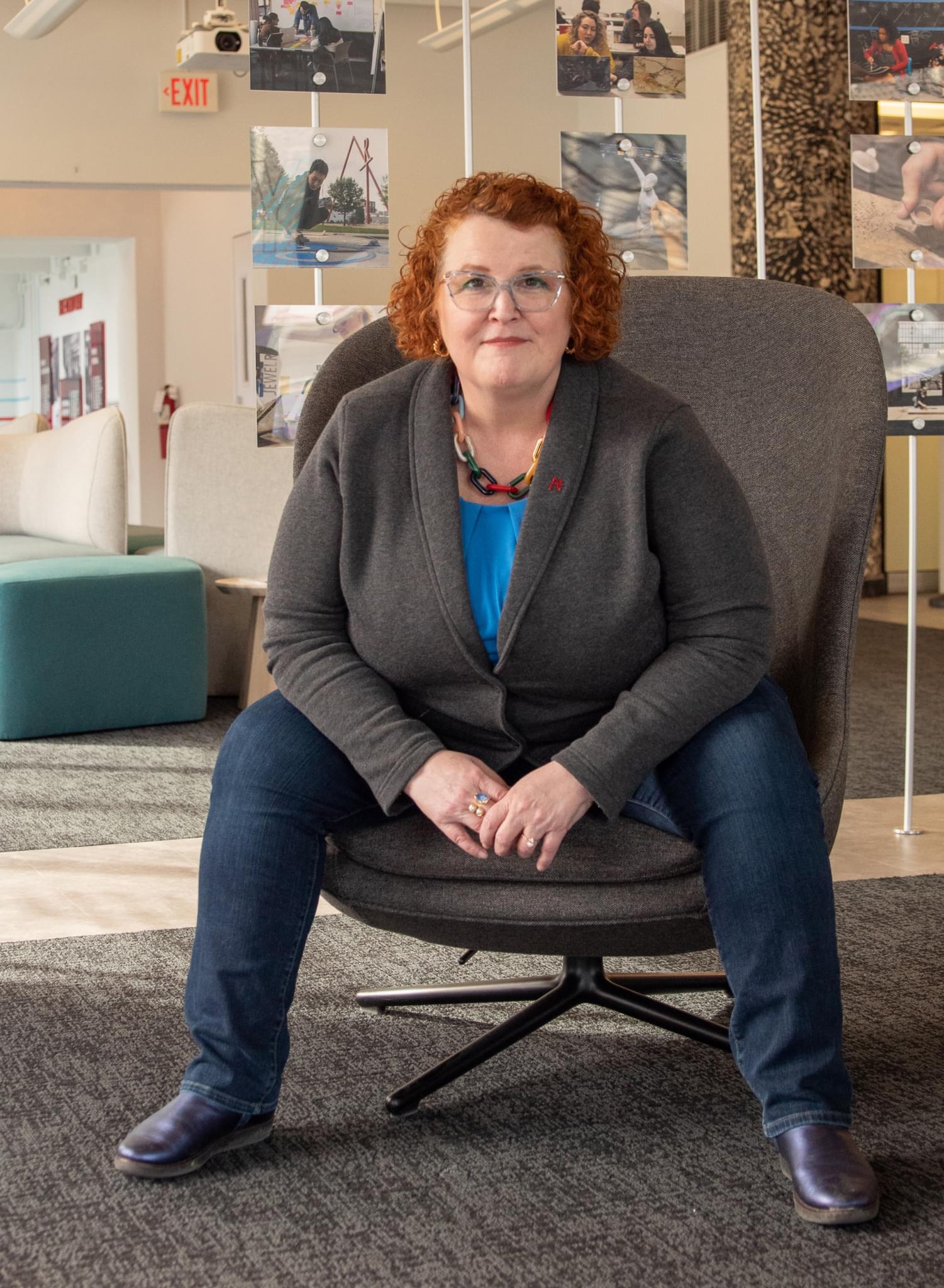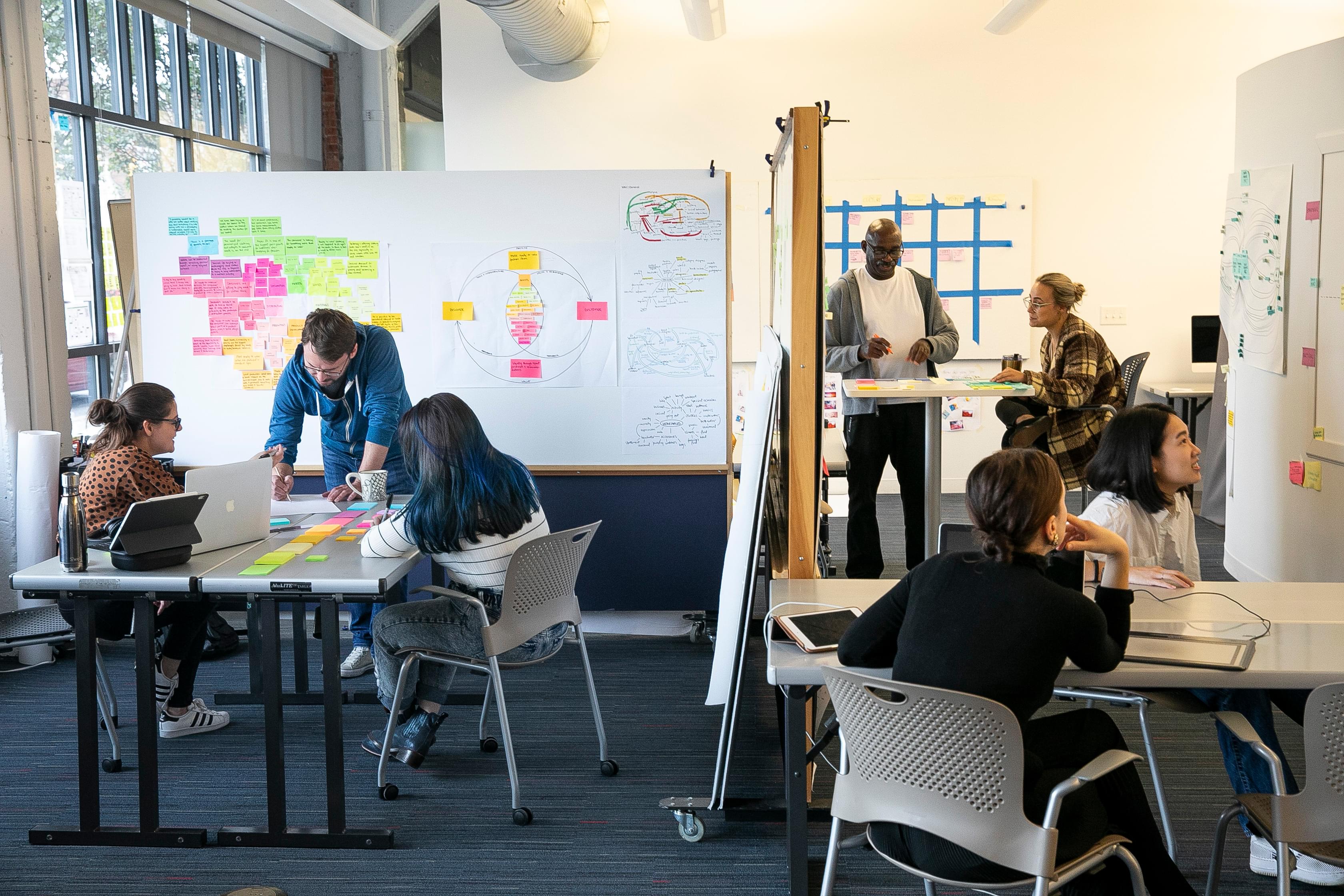
What is UX design?

User experience—UX for short—is about much more than simply coding. It’s about finding creative solutions to human problems. Columbus College of Art & Design’s new Master of Professional Studies program is here to help professionals build the skillset to do just that, readying them for in-demand, high-paying career across a range of industries. This program also is built with working professionals’ needs in mind: Classes happen online on weekday evenings and Saturdays, with just a handful of in-person sessions, and the degree can be completed in one year (full-time) or two years (part-time).
CCAD’s Master of Professional Studies in UX Design is enrolling now for fall 2023. In advance, MPS Chair and Associate Professor Dr. Tamara Peyton talked to us about what UX is, what it isn’t, and what students can expect in CCAD’s MPS in UX Design.
A degree at the leading edge of UX
“Human-centered design is the next evolution of UX,” says Peyton. “By remembering that ‘users’ are people first, we refocus on human needs and human capacity. We also refocus on the requirement to get the solution right for the people who will be most affected by the thing or service we design.”
Real-world training in UX approaches, processes, skills, and methods
“CCAD’s MPS in UX Design is based on professional training, which means that the coursework will be centered around real-world examples, situations, and project prompts that draw from local and regional businesses,” Peyton says. “This also means that a lot of the coursework will be done as teamwork with other students.”
The program is built around an effort-based approach, with students assessed largely on their degree of effort toward learning specific concepts in the course—whether that’s a mindset, a skillset, or a process orientation. “The effort-based approach contrasts with more typical outcome-based learning, and is the better way to learn how to do things in the real world. Try, and sometimes fail at doing it well, but learn from the outcome of the effort,” Peyton says.
You won’t find this “secret ingredient” to UX design anywhere else
In addition to the strengthening of core business skill sets, such as time management, teamwork, critical thinking, and oral communication, the MPS in UX Design program will equip students with skills in research, design, project management, and human interaction; the ability to conduct human, business, and market gap analysis; and, finally, a greater understanding of how an individual’s opportunities are shaped, directed, and constrained by social and institutional forces—and how that in turn has specific, measurable impact on people and populations.
That last item “is one of the ‘secret ingredients’ of the program, and it’s an area that sets the program apart from other UX or human-computer interaction (HCI) training programs,” Peyton says. “It involves honing knowledge drawn from sociology, social psychology, political science, and communications.”
Not a UX bootcamp, not a UX certificate—a master’s degree in UX Design

Peyton uses a restaurant analogy to describe other UX learning offerings. A bootcamp, she says, “is an appetizer. It gives you a fast and small taste of what might be possible in a UX career, but doesn’t train you for that career.” While technically edible, a bootcamp is low in substance—not unlike a few bags of corn chips and dip.
Peyton compares a certificate program to a buffet. Such a program may offer a variety of learning points and topics, but it lacks the quality and depth to provide the training a UX professional needs. Meanwhile, UX programs that focus narrowly on teaching design tools are not unlike a line cook who only knows how to use a griddle or a fryer, and who is unable to pivot if asked to make something else. And for their part, HCI programs are too tech-heavy to satisfy businesses’ real, and sometimes messy, wants and needs.
By contrast, CCAD’s MPS in UX design program offers instruction in the technical skills needed for students to advance in their careers or make a job switch, as well as the accreditation that employers seek. “Our program is focused on wide-ranging experience in three depth areas: human needs research; business functioning and capacity; and the design of appropriate products and services. Because of that, we avoid the problems of the other approaches. Courses are synchronous and tailored to the cohort. Students are assessed on what they know and on what they can do and on how they do it,” Peyton says.
Which industries need employees with an MPS in UX Design? All of them.
Just which employers need employees who understand UX design? “Every single industry. Literally,” Peyton says. “We are in a service-driven economy that is grounded in the need for people to have instant access to relevant information and to the right people and services that will help them to achieve their goals, whatever those might be. Therefore, people need the capacity to share, collaborate, buy, and sell in digital and physical environments that are suited to the tasks people need to do.”
Peyton anticipates CCAD’s MPS in UX Design graduates will hold a variety of job titles, including creative lead, UX designer, solution designer, UX researcher, and product manager, to name just a few. “The difference in each role is the way in which the alum will use their understanding of people, information, technology, and business to creatively solve human problems and address business needs,” she says.

Preparing students to adapt and pivot—in their work and in their career field
Many programs teach from a utopian perspective—the “perfect, correct way” to do design. But the real world of business is messy, says Peyton, and rarely will a professional be able to execute a project in the ideal way. Instead, she says, “They will constantly be adapting, changing, reducing, or growing a project scope, and as part of that, some of the ‘best’ ways to do project work will be skipped entirely. By learning how and why this happens in the real world, our graduates will be better able to pivot and adapt to changing business requirements.”
In addition, because CCAD’s MPS in UX Design is calibrated to the needs of existing working professionals—or to working professionals interested in re-skilling or cross-skilling to a different career and role—its applied nature leverages students’ existing life and career experiences and mindsets. “The program welcomes students who are current or former nurses, K–12 teachers, social workers, military personnel, and retail sales professionals as it is to graphic designers, artists, business managers, and computing professionals,” Peyton says.
Making the world better, one product or service at a time
Peyton’s history in UX predates the term UX itself. Early on, “my role in various companies, big and small, was to figure out what people needed and then design web-based offerings that provided solutions to those needs,” she says. She learned how to talk high-tech with developers—and also how to listen to and understand the needs and challenges of non-technical people. Her formal education included bachelor’s and master’s degrees in sociology before she entered an interdisciplinary computing PhD program that focused on people, information and technology design.
Peyton is passionate about her work, because she’s seen the impact of good design in ways large and small. For instance, as a gamer, she’s played through “heavily masculinized game offerings that don’t consider the needs of half of the human race,” she says. “Game controllers are too large, gaming chairs aren’t made for female bodies, and many games are hyper-sexualized for the male gaze.” With UX design principles in mind, gaming accessories and the games themselves could be updated to serve a greater number of users.
On a larger scale, UX design sets a path for many lives to be improved. Says Peyton, “I’m the first in my family to graduate high school, and so I know how much education can change lives and provide opportunities to life-flourishing careers. If I can ‘pay it forward’ by educating more women and more BIPOC (Black, Indigenous, People of Color) people into UX, then we can reduce blindspots and biases and keep moving forward to inclusive design that results in inclusive human cultures, whether those are in companies or in market offerings of products and services. My ambitious goal is to change the nature of what it means to be human, by making the world more humane, one product or service at a time.”
Learn more about CCAD’s Master of Professional Studies in User Experience Design program.
